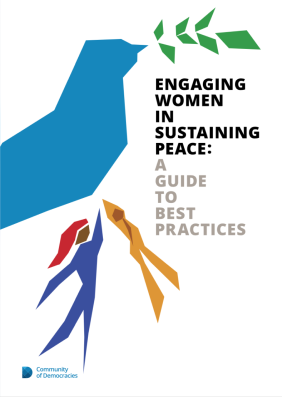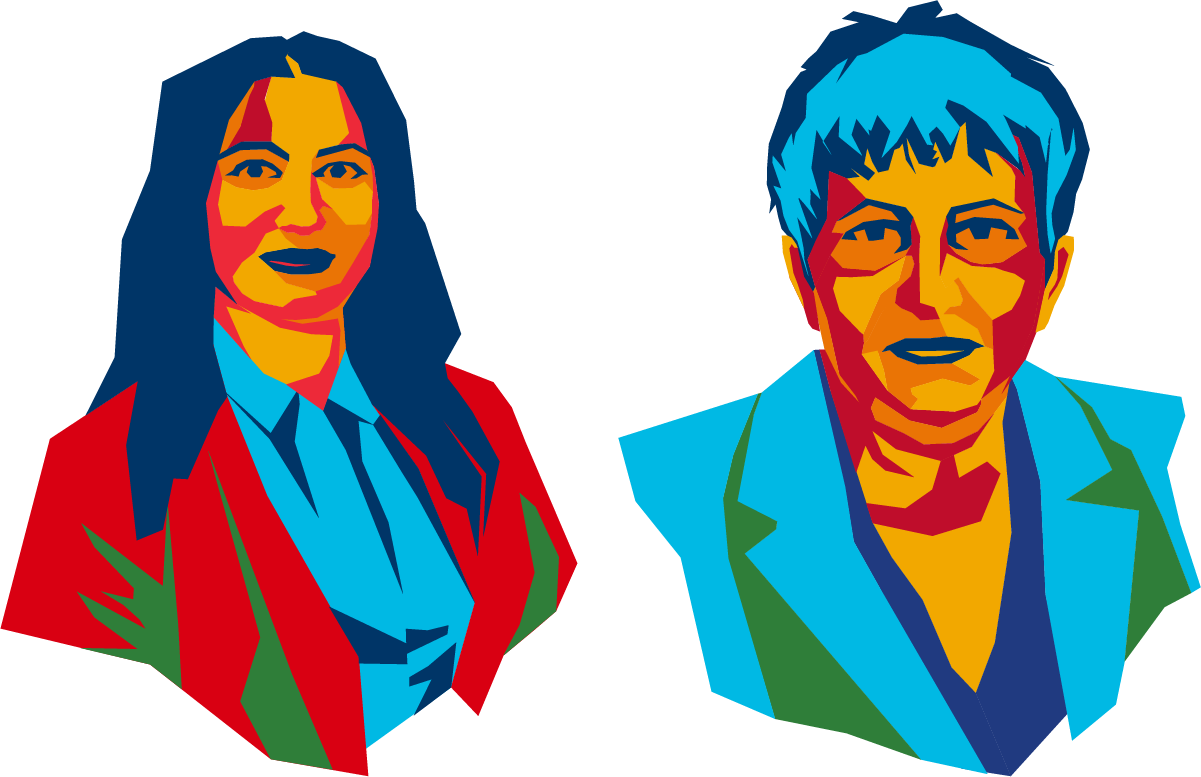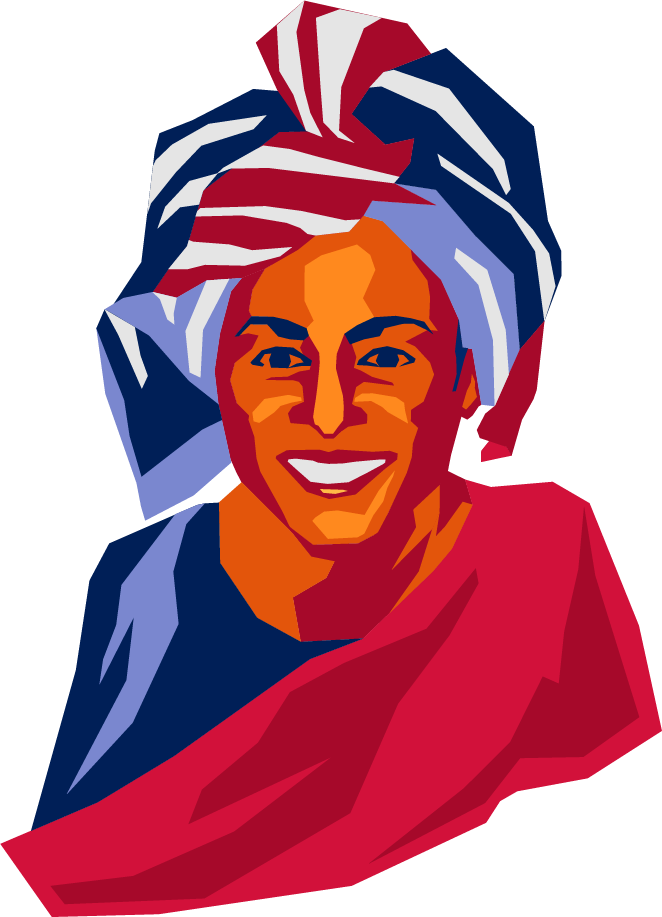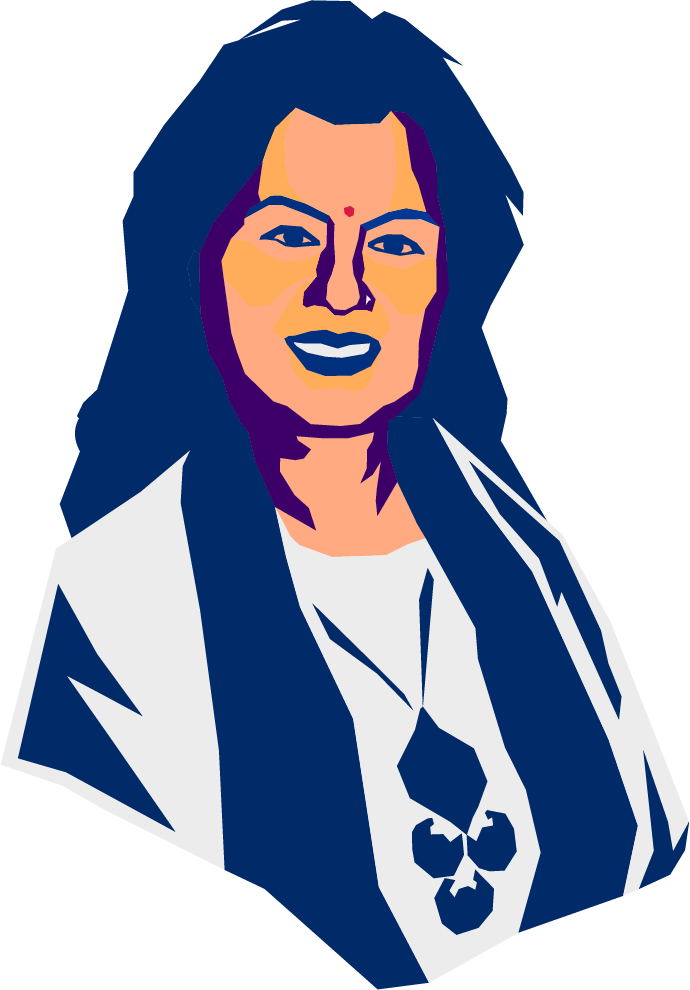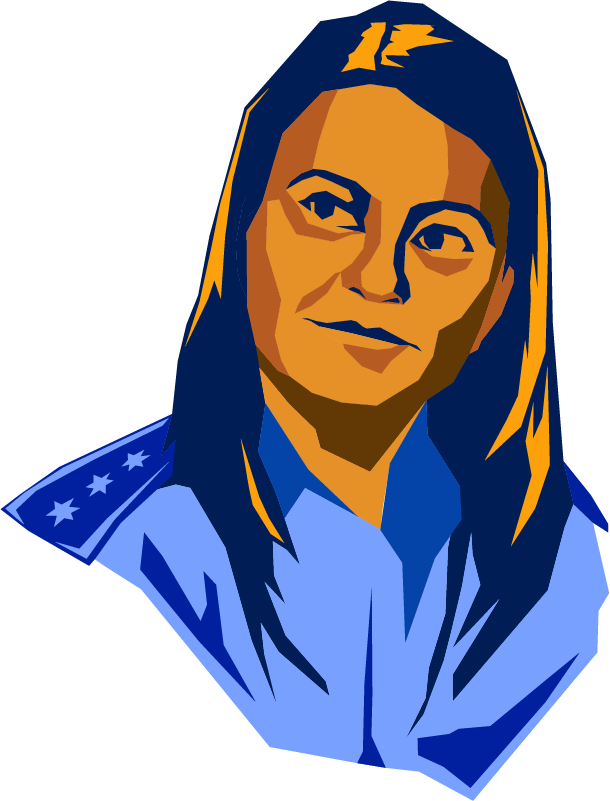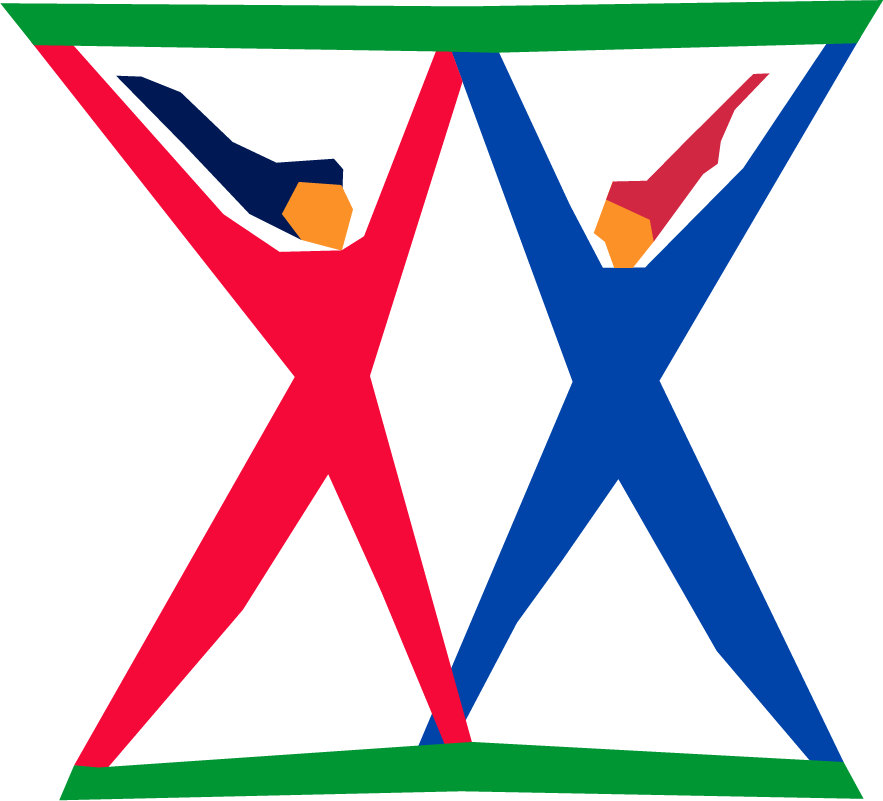The Sri Lankan Civil War between 1983 and 2009 was an armed conflict between the government of Sri Lanka and the Liberation Tigers of Tamil Eelam who were seeking to create an independent state for the island’s Tamil minority. The war resulted in an estimated 80,000-1000,000 deaths.1 https://reliefweb.int/sites/reliefweb.int/files/resources/The_Internal_Review_Panel_report_on_Sri_Lanka.pdf
Women in Peacebuilding: Sri Lanka
Kumudini (Kumi) Samuel grew up in an inter-racial family in Sri Lanka where her political awakening and activism was nurtured: “My father is Tamil, my mother is Sinhalese, so this kind of politics, this kind of engagement and work was not a problem although I suppose they would have been happy if I had qualified professionally in something and I actually didn’t.”
Her definitive and dedicated work in human rights and peace activism began in 1979. After completing her A-Levels, gaining a General Certificate of Education (GCE), she got involved in trade union politics, feminist politics and with inter-ethnic politics: “When I finally did do my masters, they gave me an exemption, I was in my forties!”
The Student Christian Movement (SCM) was the place of convergence in the heart of Colombo and as a member of the SCM, Kumi was part of the conversations on the troubles that they saw and as political parties, trade unions and civil society rallied together and the Movement for Inter Racial Justice and Equality (MIRJE) was formed.
MIRJE as the leading umbrella organisation brought together the diversity of civil society including women’s rights activists as the Sri Lankan economy was just opening up with the establishment of free trade zones. Kumi with others was concerned about the situation of women as the economy became more liberal focusing on women’s human rights and labour rights, economic and gender justice. As a member of the Women’s Liberation Movement (WLM): “I helped set up the Women’s Centre in the vicinity of the free trade zone to work with women workers and we also talked about ethnic politics together with class and feminist politics. I was doing Women’s Centre work, I was doing work for MIRJE, Women for Peace and the Women and Media Collective. I got paid from one place – that was how we worked in those days.”
Women for Peace
According to Samuel, since the early 1980s women’s groups in Sri Lanka have been “increasingly challenged by issues of human rights, ethnic politics and the armed conflict, in particular their impact on women.” In her view, the first significant formation of progressive women’s groups was within the Women’s Action Committee (WAC), established in 1982. Though based predominantly in the South, these groups were organized among women workers, peasant women, students and church denominations. They also had contact with Tamil women’s groups in Jaffna and Tamil plantation workers in the central hills. Throughout the early stages of the conflict, particularly following the July 1983 ethnic pogrom, the WAC continued its call for a political solution to the ethnic conflict, joining with other women’s groups. It also linked the ethnic conflict and the politics of violence to the deterioration of democracy with its consequences for all ethnic communities of Sri Lanka: “… from the peasantry, trade unions, the fisher communities, from the plantations, and so on. It was a very inter-ethnic mixed group of women.” The women responded together.
Events unfolded further and accelerated by the war in 1983. Samuel became part of a critical alliance initiated by Kumari Jayawardena with Anna Subramaniam which saw women from all ethnic communities mobilized across class and regional barriers to form the alliance “Women for Peace”, launched with a petition of 10,000 signatures calling for a peaceful and negotiated solution to the ethnic conflict. The petition was initiated and signed by leading women from political, professional, academic and cultural spheres.2https://reliefweb.int/report/sri-lanka/role-women-peace-building-sri-lankan-perspective
The first all party conference was indeed held later that year, but while the conference failed, Women for Peace continued and took a step to open up the conversation on displacement and refugees, documenting what was happening within the resettlement of people from the plantations into the Vanni, which became the main theatre of war (in the 2000s).
“We continued to lobby for political solutions to the conflict, staging events, commemorating women’s days and demonstrations. There was a lot of peace activism at that time.”
On July 29, 1987, a non-negotiated peace accord was signed in Colombo between Rajiv Gandhi of India and Junius Jayewardene of Sri Lanka; the accord saw huge resistance from the south particularly by the Janatha Vimukthi Peramuna (JVP) in response to ‘concessions’ offered to the Tamil people. It was, says Samuel, a very, very dangerous time which seemed to result in a larger political minefield. An amendment to the Constitution resulted in new administrative arrangements with the establishment of provincial councils and a form of power sharing with the North. But even as political tensions and armed violence continued, mothers mobilised across the war fronts. The Jaffna Mothers’ Front (also referred to as the Northern Mothers’ Front) was formed in July 1984. In the South, the Mothers Front was formed in 1990, with conventions held in 1991 and 1992, also in response to the disappearance of children and husbands.
Samuel continued with Women for Peace: “We moved straight into human rights work, dealing with the conflict and its fall out and asking for political solutions.”
Between 1975 and 1985, women peace activists were also involved in the international peace movements supporting anti-nuclear work and demilitarisation, but at home, as armed violence grew, they had to work around this dangerous reality: “I don’t think we even had the luxury to say don’t use guns, mobilise against the use of guns [because] guns were being used. People were being killed, were being disappeared. So, we started using human rights mechanisms. We had to keep working looking for people who disappeared. If you got there fast enough you could get them released. You had to deal with this political reality. You had to negotiate.”
This work meant women had to be kept safe from all sides to the war: “It was a lot of complex, sensitive work.”
During the three decades of war, women like Samuel, maintained a clear focus on their vision for an end to the war and armed ethnic violence, yet there were no major moves even after the end of the war, to enhance women’s roles as political partners in decision-making processes. Even though the political solutions detailed in the first Women for Peace solution, and subsequent recommendations were relevant for the consultations that followed, including Sri Lanka’s Lessons Learned and Reconciliation Commission (LLRC) which was set up in May 2010, the LLRC was launched as a government-driven and “home grown” initiative and remained operative until it delivered its final report in December 2011.
“That is the bedrock on which we have to build a future” says Samuel.
“In 2001 there was a change in the government and there was a hope that this [new] government could negotiate and begin a peace process. We did a lot of work mobilising women, mobilising communities, leading to the ceasefire in 2002 and we were the first to comment on the ceasefire agreement. We called to strengthen it. We asked for women to be part of the ceasefire monitoring.”
The mobilisation included a large demonstration of women in Colombo for International Women’s Day, 2002: “Then we started talking about the beginnings of the peace process, peace talks and the need to have women’s concerns to be included. The peace process had started but they didn’t bring women in.”
This compelled Sri Lankan feminists to revisit their engagement with the state.
“An International Women’s Peace Mission” facilitated by the Women and Media Collective led by Samuel and the International Centre for Ethnic Studies (ICES) led by Radhika Coomaraswamy was mobilised to meet with women and men living in conflict affected areas in the country and learn of their concerns, needs and aspirations. The Mission comprised internationally renowned women human rights activists and a group of women from all the conflict affected areas in the country. Data gathering teams visited Jaffna, Kayts, Vavnuniya, Trincomalee, Batticaloa and Mannar, the border villages of Polonnaruwa District and the Puttalam District. A comprehensive Report was compiled as a result of this initiative which became the basis for lobbying with all parties to the conflict and was also presented to the international Donor Consortium that was part of the peace process in 20023https://reliefweb.int/report/sri-lanka/role-women-peace-building-sri-lankan-perspective:
“We had recommendations from all sides, from a gendered perspective and we lobbied with that” says Samuel, adding “[then] “I got a call saying we want to have a Women’s Committee, do you want to be part of it?”
The five women who were appointed by the Sri Lankan government Dr. Kumari Jayawardena, Dr. Deepika Udagama, Dr. Fazeela M. Riyaz, Ms. Faizun Zackariya as well as Samuel were all from civil society: “We finally formed a sub-committee on gender issues because we didn’t want to be a women’s committee that was marginal to the peace process. We wanted to bring a gender lens looking at all the parts of the negotiations process and we asked for a seat at the table which they actually agreed to.”
According to official reports, the establishment of the Sub-Committee on Gender Issues (SGI) was agreed upon by the Government of Sri Lanka and the Liberation Tigers of Tamil Eelam (LTTE) during the third session of negotiations in Oslo 2-5 December 2002. The first meeting of the SGI was held in Kilinochchi 5-6 March 2003. During the meeting in Oslo both parties expressed their willingness to set up this Committee in order to secure the active participation of women and the effective inclusion of gender issues in the peace process.Samuel produced the first draft of the SGI’s memorandum drawing from the documentation mission to the North and East: “And the LTTE women accepted it. They just strengthened it with one or two preambular paragraphs.”In their determination to include the gender perspective in the peace process the SGI decided to focus their efforts on the following issues in the immediate and long term, these were sustaining the peace process, resettlement, personal security and safety, infrastructure and services, livelihood and employment, political representation and decision-making and reconciliation4http://www.peaceinsrilanka.lk/negotiations/rng-051: “I think it was the only agreement we were able to make with the LTTE.”
Unfortunately, the formal talks stalled.
Forward Looking Strategies
Even before the end of the war in 2009, Sri Lankan women have tried to access justice. They have filed police complaints; submitted cases to the National Human Rights Commission; written letters to members of Parliament and testified before numerous Commissions such as the Lessons Learned and Reconciliation Commission. Their activism has involved working with others including acting as community mobilisers during the Government’s consultation on transitional justice and discussions on the new Constitution. It was a time, says Kumi, when many women were involved at many different levels: “The Constitution Reform process had women in the main committee. The Transitional Justice mechanisms had 50 per cent representation of women in the main committee.” There was even 40 per cent representation of women in the zone level task forces.
In early 2016, the Consultation Task Force on Reconciliation Mechanisms (CTF) was appointed by Prime Minister Ranil Wickremesinghe to carry out public consultations on mechanisms that had a special section on gender and had a more gender-sensitive approach. Its head, Manori Muttetuwegama, was a woman and the Task Force’s recommendations included a number of specific provisions concerning women, such as gender-sensitivity training for public servants.
In 2017 when Pablo de Greiff, the Special Rapporteur on Truth, Justice, Reparations and Guarantees of Non-recurrence, visited Sri Lanka to assess the implementation of Human Rights Council Resolution 30/1, the Women and Media Collective called for an independent Women’s Commission to be established.5https://blogs.lse.ac.uk/wps/2017/10/22/women-demand-better-access-to-truth-justice-and-reparations-in-sri-lanka/
But today Samuel is concerned that despite the wide-ranging consultative processes, her country has not reached a sustainable solution many were seeking. She is disheartened by the range of challenges in the way, including the 2019 Easter Sunday bombings: “We might have to begin to work again but there are a lot of very valid recommendations [from the women]” says Samuel, adding it is time for the continuation or even the time for a reimagining of a peace process: “The work that was done from 2015 to 2019 to look at transitional processes, to look at constitutional reform for power sharing, to look at issues of justice, to look at any kind of reconciliation mechanism… The ‘victory’ against the LTTE was won militarily not politically.”
It presents an opportunity, she says, to revisit the political solutions and ensure there is greater participation of women: “We now have to begin again and understand what it all means in political terms. It is what started in 2015”.
The highest level of political will can propel Sri Lanka into a new era by revitalising a political movement, not the politicization of the movement, suggests Samuel: “These processes have to be reignited, revisited, rethought. It’s not simple, it’s not linear and today we have many more women involved, on both sides [but] today everybody is fragmented and politicized, it is partisan politics. There is competition for funding. Heightened securitization makes people scared.”
Distrust and division amongst the women’s movement must also be addressed, says Samuel, using both online and off-line opportunities because while women’s groups have flourished in the north and the east since the war, there is very little crossover and collaboration with women in the South due to ethno-nationalist politics and polarisation.
But for women’s representation in these new processes Samuel is adamant that it must look beyond the number of women to the content, the substance of women’s engagement addressing the reality of women-led households, the prevalence of gender based violence, identity politics and women’s economic rights: “1325 cannot simply make wars safer, it needs to address why does war happen? Why does war continue? It must address the armaments industry, authoritarian and populist administrations, illiberal democracies, violent extremisms, the backdrops to wars and conflict.”
It is also not enough, she says, to say having women at the table is the solution: “I think there is not just one table. There are continuous tables. There are different tables. Women sit at different points, at different places. Formally, non-formally, it is an evolving process. That is what needs to be understood about representation.”
These complexities are now further exacerbated by the COVID-19 crisis and so even as she sees the challenges, she is pragmatic: “There are no easy answers. We cannot say one size will fit all.”
It is an evolving process, she says, that needs to address the drivers of conflict and violence, and factor in women’s health and food security, economic security and personal security of women workers whether it is those who now have to work from home, or domestic migrant workers or women labourers in the plantation sector, or the women employed in garment, tourism and hospitality sectors:
“All of that is what I would call peace and security.”
-
www.reliefweb.int
The Internal Review Panel report on Sri Lanka -
www.reliefweb.int
The Role of Women in Peace-building:
a Sri Lankan Perspective -
www.reliefweb.int
The Role of Women in Peace-building:
a Sri Lankan Perspective -
www.peaceinsrilanka.ik
First Meeting Of The Sub-Committee On Gender Issues -
www.blogs.lse.ac.uk
Women demand better access to truth, justice and reparations in Sri Lanka
The story of Kumi Samuel of Sri Lanka speaks directly to conflict resolution, a first commitment from the UN Secretary General seven-point action plan for gender-responsive peacebuilding (2010). Based on desk research conducted on post-conflict countries across the world, the Community of Democracies’ publication on “Engaging Women in Sustaining Peace: A Guide to Best Practices” distils seven commitments outlined in this action plan and identifies good practices and lessons learned in engaging women in peacebuilding.




 go back: about
go back: about
